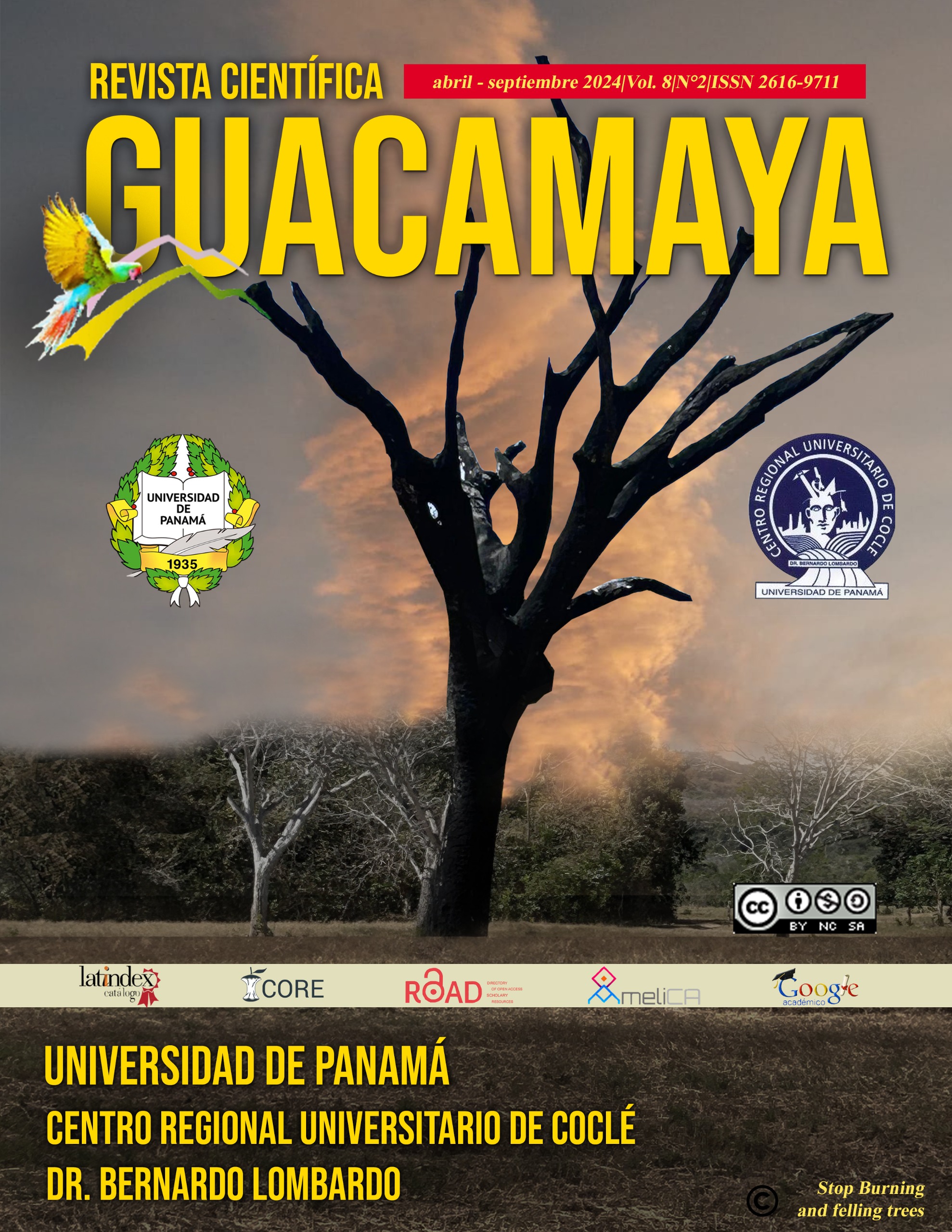

Copyright (c) 2024 Revista Científica Guacamaya

This work is licensed under a Creative Commons Attribution-NonCommercial-ShareAlike 4.0 International License.
Aquatic insects are important as indicators due to their ease of identification and study, in addition to being sensitive to environmental changes that are reflected as water quality. In addition, they assist in processing some organic matter from aquatic and terrestrial origin. It represents a link between the basal energy sources and higher trophic levels. The objective of this research was to determine the diversity of aquatic insects associated with leaf litter, in the stream of the Jujuna Biological Station, located in the community of Larguillo, in the district of Chiguirí Arriba, district of Penonomé, province of Coclé, Republic of Panama. This study was conducted between February and July year 2022, when we established six stations. In the station, two leaf litter samples were taken once a month. The Shannon-Indices, Wiener, Margalef, and Simpson were used to determine diversity. Around 2,420 individuals were identified and distributed in seven orders, 24 families, and 29 genera, highlighting the Diptera, followed by the Coleoptera and Trichoptera. The most abundant subfamilies were Tanypodinae, Chironominae, and Orthocladiinae. The most numerous genera are Phylloicus, Anchytarsus, and Traverella. According to the Simpson index, the stream has barely insect relative dominance. On the other hand, the Margalef and Shannon-Wiener index, something different happens because the values ??show that the tributary has a good diversity of insects associated with leaf litter. In conclusion, it was determined that the Jujuna Biological Station stream has a good population of aquatic insects, which was more significant in the dry season.